Wildlife emergency in Bolivia as fires threaten animal sanctuaries
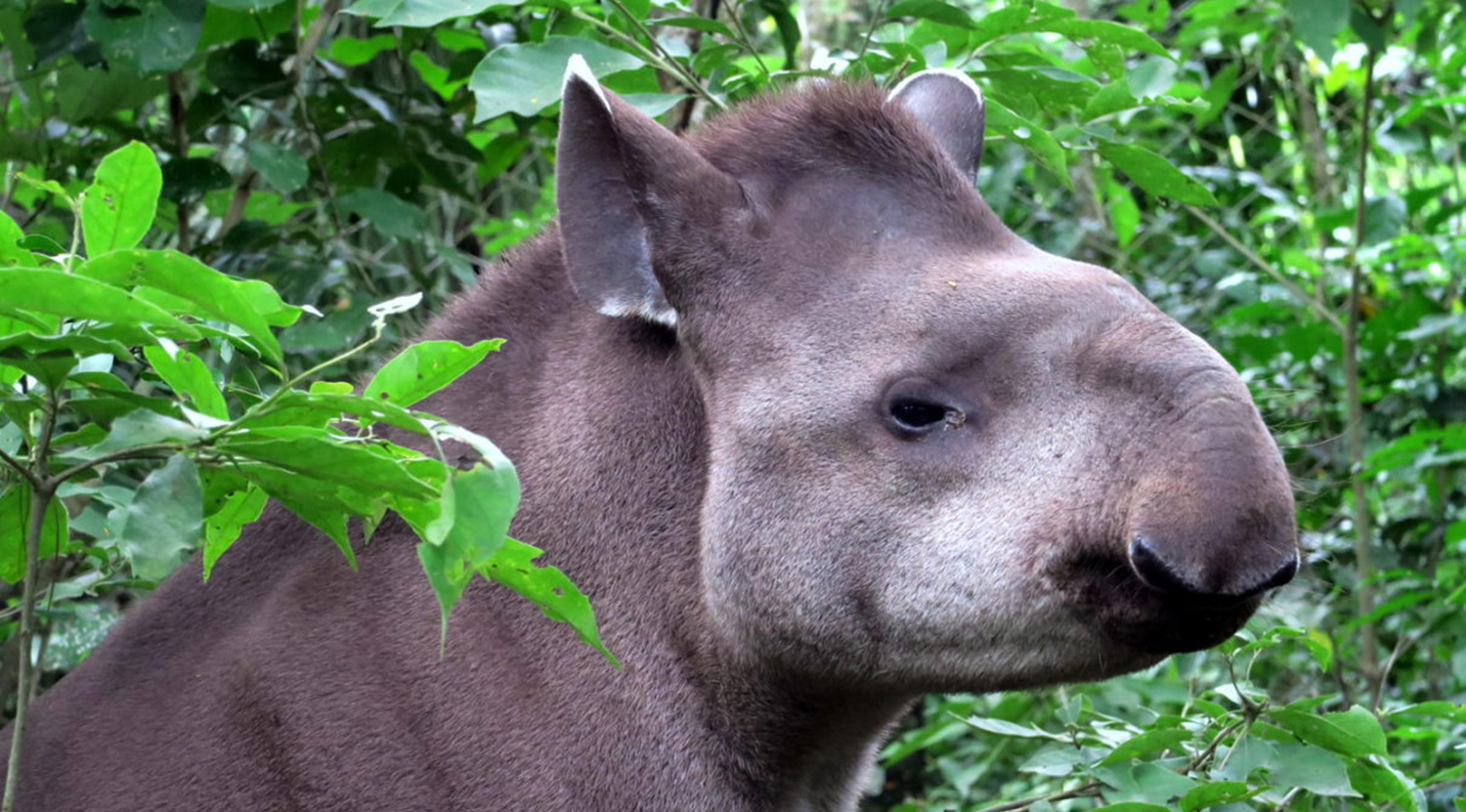
- More than 120 major fires have been detected in Bolivia’s Amazon rainforest and dry forests of Chiquitano since March, according to the nonprofit Monitoring of the Andean Amazon Project (MAAP).
- One of these fires is now threatening an animal sanctuary in Guarayos, Bolivia outside the city of Santa Cruz de la Sierra.
- The Ambue Ari Sanctuary of Comunidad Inti Wara Yassi (CIWY) is being choked by haze as it is flooded with animals in need of rescue from fast-moving fires in the region.
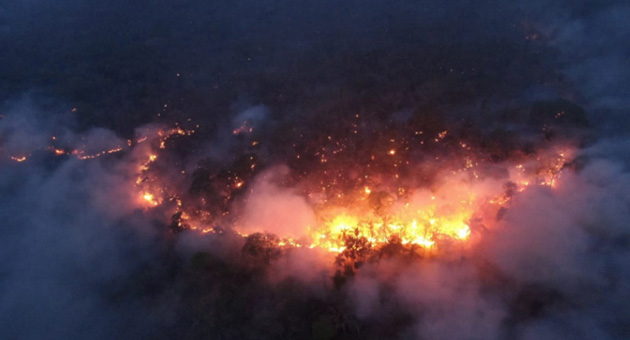
A ghastly orange grin extends across the treetops in Guarayos, Bolivia, marking a cruel turn of fate for rescued wildlife. On the ground, the air is too smoky to breathe, and hot enough to scorch. The woods are so dry that everything burns. Fire is eating its way through one of the world’s great efforts on behalf of wild animals rescued from illegal trafficking, poaching, and habitat destruction.
The Ambue Ari Sanctuary of Comunidad Inti Wara Yassi (CIWY) is under severe fire threat. It is one of three CIWY-run sanctuaries caring for a total of over 500 rescued animals across 39 species, some of which are endangered. CIWY is a Bolivian non-profit that rescues and protects wild animals.
This is the frontline of a wildlife emergency already weeks in the making and now overwhelming all containment efforts. The fire takes what is living, chokes it, burns it, and then casts glowing embers onto other areas, expanding its reach. Ambue Ari is being ravaged. Because of the pandemic, this year the sancutary does not have even half volunteer staff normally available to help with the recurring wildfires—restrictions have all but stopped the entry of new people to the area. Beyond the animals the center houses and cares for, there are thousands of other animals that have found refuge in the sanctuary that are also threatened, burned, and displaced.
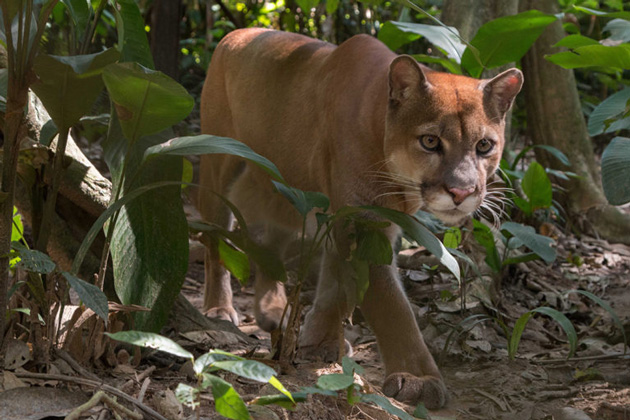
The fires started two weeks ago, according to Andrea Benavente, communications director for CIWY, who is also helping to coordinate firefighting efforts and find additional support. The area where the fires started as slash-and-burn clearing by locals is made up of a mix of hills and valleys bounded by a mountain, explains Benavente. Winds and burning embers accelerated the fire through the canyons, quickly expanding the blaze that now threatens the 2,100-acre sanctuary.
“Really, we are in profound despair at this moment, and that is why we again appeal to the authorities to send us air support. There is not another way to get control of the fires that at this moment are already within the Ambue Ari Sanctuary,” she said.
It is indeed hard for land-based firefighters to know the exact location of the fire, complicating the effort to mount an effective response. Benavente said drone and aerial support are needed in order to map the fire, direct resources and deliver sufficient quantities of water to extinguish the fires.
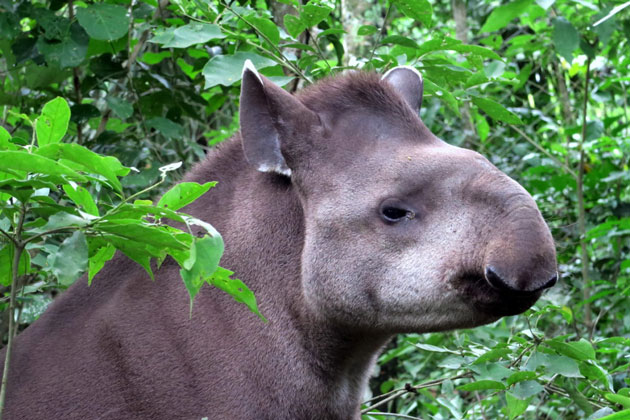
The area is a natural corridor for big cats and other endangered animals, and at least one jaguar was seen crossing roads in a mad exodus of scorched and frightened wildlife. Voracious flames and choking smoke kill animals outright and also chase them from their habitat, making them susceptible to opportunistic predators as they flee.
While birds can often fly away from wildfires and are better equipped than ground mammals, they are sometimes overwhelmed by the rapid-moving fires, and cannot leave the burning trees because of their nests, explained Benavente. “We are losing a lot of wildlife… we are talking about lives that are raked over second by second.”
“Anger,” is the first stated reaction of conservationist Nicholas McPhee, a former Australian Army digger whose eco-tourism company, Nicks Bolivian Adventures, promotes the area’s biodiversity and looks for solutions to wildlife conflicts. “It’s a feeling of hopelessness, shame, and anger,” he said. “Every year fires are increasing, yet political parties keep pushing for more land-clearing and extractive policies that are driving these fires and destroying the incredible flora and fauna of Bolivia.”
It’s a shame that these animals rescued from wildlife trafficking are not even safe in wildlife refuges, adds McPhee.
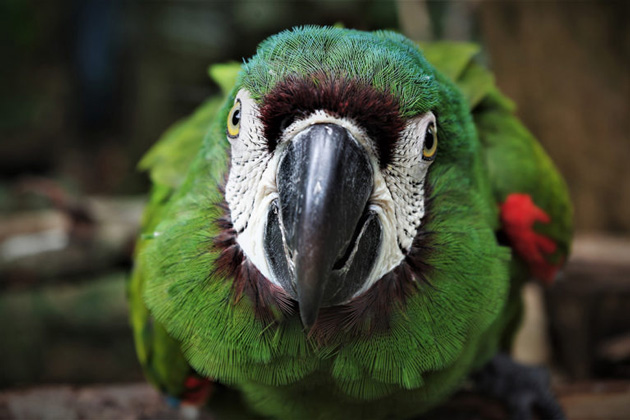
The biodiverse region affected by the fires hosts an incredible amount of wildlife, including endangered species like the harpy eagle and many threatened species like lowland tapirs, jaguars, spider monkeys, and more, explained McPhee. “Jaguars, which are rapidly declining, are often forced to look for livestock after fires and are frequently killed. Without jaguars, other species like peccaries can reproduce to unsustainable populations and cause a lot of damage to crops, and affect forest regrowth too.”
“Tapirs, for example, are extremely vulnerable to local extinctions due to slow reproduction and overhunting. With fires and limited forests, they become easier for locals to hunt; as they are important seed-dispersers, the forest regrowth is greatly affected,” he said.
“We can’t continue to be indifferent to this reality,” concurred Benavente. “We need to press the authorities so they can take not just mitigation but also prevention measures and strengthening of the sanctions — it is forbidden at this time to burn at the national level. This is what happens with the lack of conscience of people who continue setting fires.”
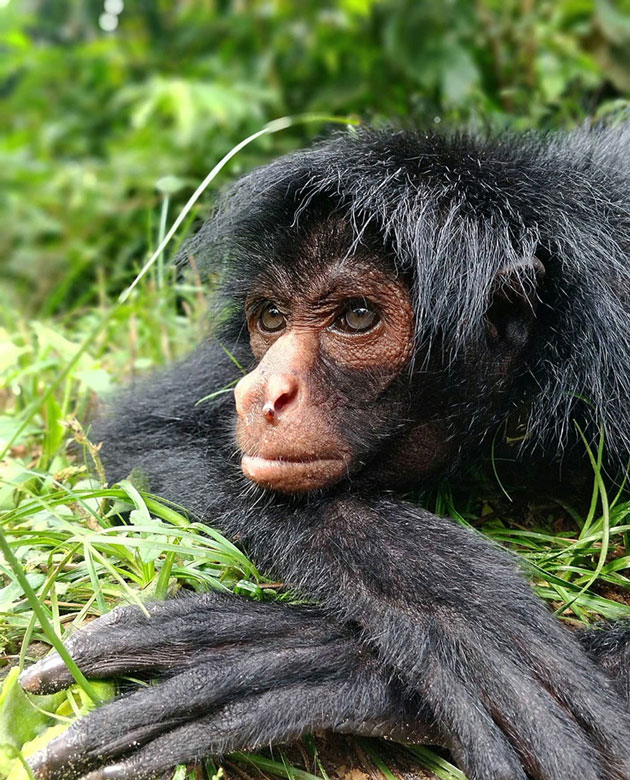
For more than 28 years, her organization has been rescuing wildlife from illegal trafficking, circuses, and mistreatment with an overall mission to conserve biodiversity in the area.
Wildlife researchers at Ambue Ari study the rescued animals well as other wild animals that live independently on the protected lands, in the process, the knowledge-base of sanctuary staff is unique in its understanding of rescued wildlife, new world primates and felines and they are a source of advice and information to governments and organizations on the care of such animals.
Though the ultimate goal is to release an animal back into the wild, it is not always possible. The sanctuary has nonetheless been able to rehabilitate and reintroduce animals from different species back into the wild.
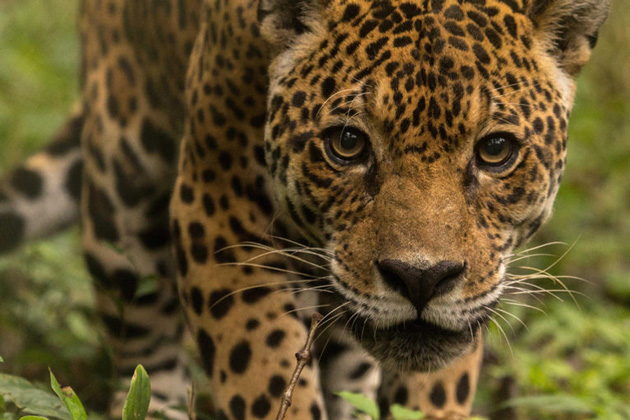
The CIWY website points to success stories with capuchin monkeys, squirrel monkeys and howler monkeys. “They can practice survival skills together in the sanctuaries and be released as groups into the wild,” the website states. Some animals cannot be handled directly by humans, so the center has built enclosures or runners with a special system that allows them to move around without human interaction.
The threatened sanctuary is located in a remote and economically poor region of Bolivia where hunting and deforestation for agriculture have been a way of life for centuries. CIWY also runs a parallel effort to employ locals and to provide education and environmental awareness.
“The truth is we feel totally overrun, frustrated because we cannot help all the animals that need it,” said Benavente, noting again that her 14 volunteers are working round-the-clock turns to fight the fires.
“Yesterday at dawn, we had to evacuate an ocelot and a puma because their enclosures were overrun. Imagine those animals that cannot escape because they are in enclosures.” Because many of the animals in the sanctuaries are victims of illegal trafficking, they are not in a condition to escape the fires or live on their own.
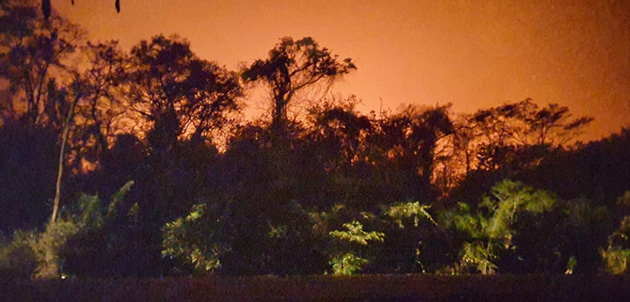
“They are nearly all at risk of local extinctions — the jaguar, the spider monkey, the lowland tapir, and the white-lipped peccary,” McPhee said. “These are the species that generally are most affected by hunting and landscape alteration.”
CIWY recognizes poaching and habitat destruction as the two greatest threats to the area’s biodiversity. “A larger percentage is in grave danger of becoming extinct,” said the non-profit in making the case that its work is extremely vital in keeping many species from vanishing.
As the wildfires rage sending billows of smoke into the sky, clouding the skies far into the more populated areas, and hanging a red-blood-sun over the city of Santa Cruz de la Sierra — Bolivia’s largest city and economic center — images of blackened carcasses and charred bones are just a warning of what could happen to the 39 different species of animals sheltered at Ambue Ari, which range from sloths to toucans.
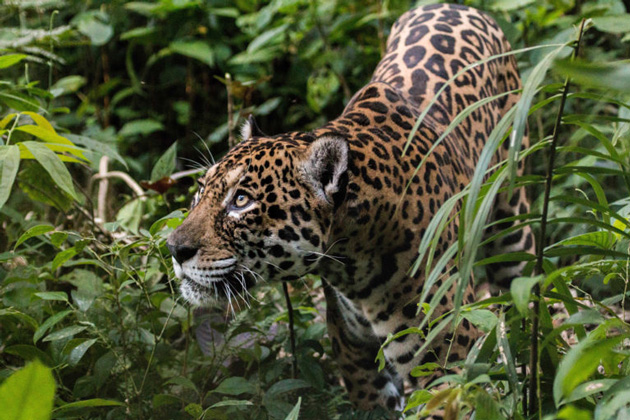
As the fires swirl and jump and engulf more land, the firefighters on the ground cannot cope. “The helpers that arrived a few days ago have declared themselves overwhelmed and unable to help us,” said Benavente. “We need aerial support.”
The Bolivian Defense Ministry did not respond to a request on a status update on firefighting aircraft to the area.
“We are just 15 people defending 900 hectares of land that holds very important biodiversity and that is why we cannot give up,’ she said.
This article first appeared on Mongabay.







